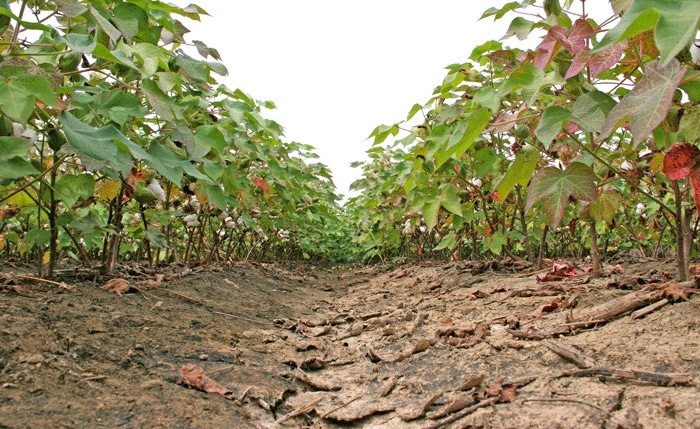August 30, 2012

Cotton prices (Dec12 futures) have moved above the target 75-cent mark, closing Friday at 75.21.
Although moving sideways during July, prices have slowly trended up since the low back in early June. After several rallies, successive lows have been higher and higher. This typically signals a slow shift toward a more bullish outlook.
The 75 to 78-cent area continues to be the target for producers needing to make additional marketing decisions. Dec12 closed at 77.3 cents on Aug. 22.
You can check current commodity prices now.
There continues to be talk of prices going to 80 cents and that may happen at some point under the right combination of events. But, at present the market has shown no willingness to break through the ceiling at around 78 cents.
Supply/demand news update
India planting and the crop are expected to be down from last year. Reports suggest, however, that planting and production may be more than USDA’s current estimate.
With a reduced crop, exports from India are expected to be sharply lower than last year. Reduced exports from India should support prices.
With lower world prices, plantings this fall may also be down in Southern Hemisphere cotton areas.
Prices will continue to be whipped around by China polices. Recent reports are that China will allow an additional 1.8 million bales of imports to be used by mills for export products.
China’s cotton stocks are expected to grow from 29 million bales to 34 million bales this season. Chinese stocks will be determined by additional imports for the purpose of building stocks and release/use of stocks for domestic mills. This will impact prices — as price would be one factor that China may consider in managing its stocks and reserves.
Positive factor
Cotton import demand from China is a positive factor in the short-term and should help support prices. Longer-term, prices could be negatively impacted by the build-up and subsequent release of stocks into the pipeline.
USDA’s August numbers estimate the U.S. crop at 17.65 million bales — compared to 15.57 last year. I believe there is now growing belief that the U.S. crop will get smaller as we get into the September, October, and further report estimates. The Texas crop, in particular, is expected to be smaller than the August estimate.
The overall Crop Condition Index continues to decline although it is weighed heavily by the Texas situation. Over the past month, the Index has declined from 3.34 (mostly Fair to Good) on July 22 to 3.10 (Fair) on Aug. 19.
Rain, rain, and more rain
The Southeast and portions of the Mid-South have had rain over the past 30 days. Many portions of the Southeast have had 5 to 10 inches of rain.
The incidence of disease is increasing and spreading in all crops. Spray operations have slowed and rain has reduced the effectiveness of sprays.
Isaac is expected to bring high winds and more rain. This will cause further delay and damage from disease unless fungicides are already applied and effective, depending on the growth stage and existing condition of the crop.
The cotton crop (as of Aug. 19) was approximately 25 to 35 percent open in portions of the Mid-South.
In the Southeast, mostly 10 to 15 percent or less of the crop is open. Of course, those numbers are likely higher now.
In areas where the crop is not too open, lint damage and loss from Isaac would be less, but the main threat will be cotton blown over due to high winds. Depending on the track of the storm, the amount of rain, and severity of the winds as it moves further inland, it looks like both the Mid- South and Southeast crops could be affected.
You May Also Like




